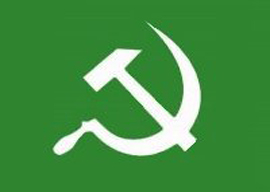
June 20, 2011

This is a very different symbol from 1989’s Velvet Revolution, which stood for regime changes, the collapse of an empire, and a triumph of Western-style democracy and the free market. “Prague Spring”—or “Arab Spring”—suggests limited reforms. It’s the same socialism, but with a human face: little more than a cosmetic change and certainly not a revolution.
So it hardly seems possible that the term “Arab Spring” has emerged by chance. It appears to be selected with care to reflect a strategic Western choice.
We have seen this before. Driven into a corner in 1989, the Kremlin and its Eastern European puppets tried hard to confine the revolutions to a mere rerun of the Prague Spring. The West swallowed this, but the people of Eastern Europe did not. Still, 1989 in Eastern Europe was not only a triumph of freedom. It was also a year of bogus movements and cynical power-sharing deals behind the scenes, a year of “roundtable” negotiations between the dying regimes and the selected opposition groups where communists and KGBs secured comfortable positions on the new political scene. The newly born democracies were corrupted considerably. Instead of a speedy recovery, Eastern Europe was doomed to years of “post-communist” nonsense; it took a generation to clear the mess.
In the Middle East, the results can be worse, much worse. Apart from the dying regimes and the infantile democratic movements, there is a major third force on the ground: the Islamists. To confuse Islamism with Islam is the same as confusing socialism with society or nationalism with nations. As a political movement, Islamism is another Cold War byproduct. Its relations with socialism have a long and complicated history, full of tactical alliances, double-crossings, mutual infiltration, and treacherous backstabbing. It includes Gaddafi’s “Islamic Socialism” and the Islamists hijacking what had been planned as a socialist revolution in Iran. It includes the words “Allahu Akbar” on Saddam’s socialist banners and the KGB’s titanic work to mobilize the Islamic world against the West. It includes Sadat’s assassination, planned by the Syrian secret police and implemented by Egyptian Islamic Jihad. It includes the massive infiltration of the Muslim Brotherhood by Mubarak’s KGB (or whatever is the Arabic for “Gestapo”) and ruthless repression against every other Egyptian opposition group. It is this legacy that will determine the Middle East’s future.
The problem with 1989-style “roundtables” is that the regime can select which opposition forces with whom to deal. That may well happen in the Middle East, and the Red Arabs will be happy to work with Islamists, who share so many of their past secrets and present interests. Like the old regimes, the Islamists are interested in keeping the archives secret and the witnesses silent. They seek “stability” rather than freedom and “orderly transition” rather than democracy. Like the regime itself, they are only a well-organized minority. To get to power, they have to outmaneuver the majority—the “Arab street,” whose only organization is Twitter. The Islamists’ old links to Red Arabs form a valuable trump card in that game.
A clash emerges between three distinct major forces: the dying socialism, the aging Islamism, and the newly born democratic movement. One would expect the West to support democrats on the streets—but the Arab Spring model commands us to support the Islamo-socialist roundtable. Like all roundtables, it is moderate. It stands for an “orderly transition”: socialism with a human face and Islamism with a human face, working constructively together to keep the wild “Arab street” under control. If we let them do that, we will soon see a region full of Islamic Republics with socialist faces—as surely as summer follows spring.